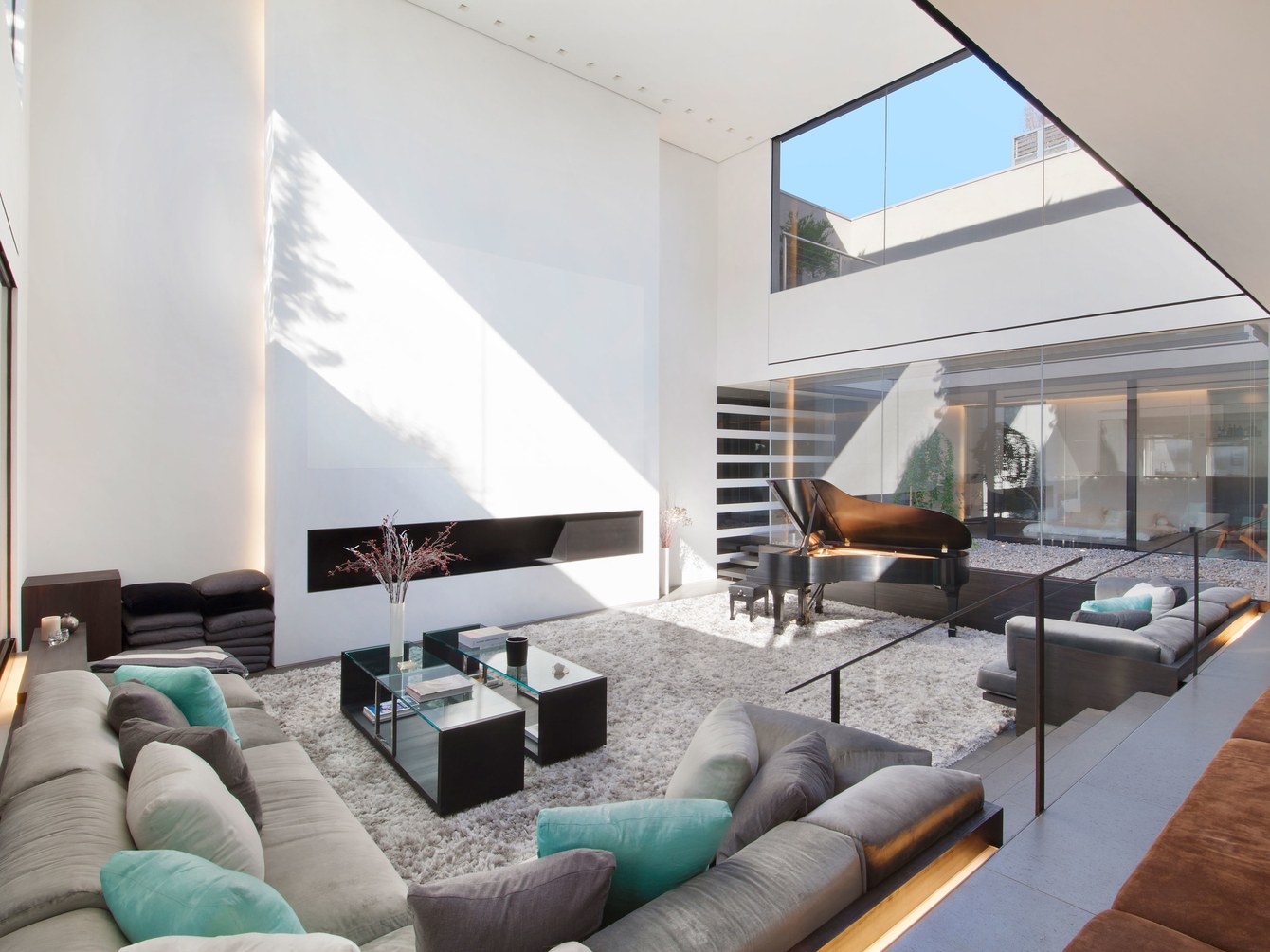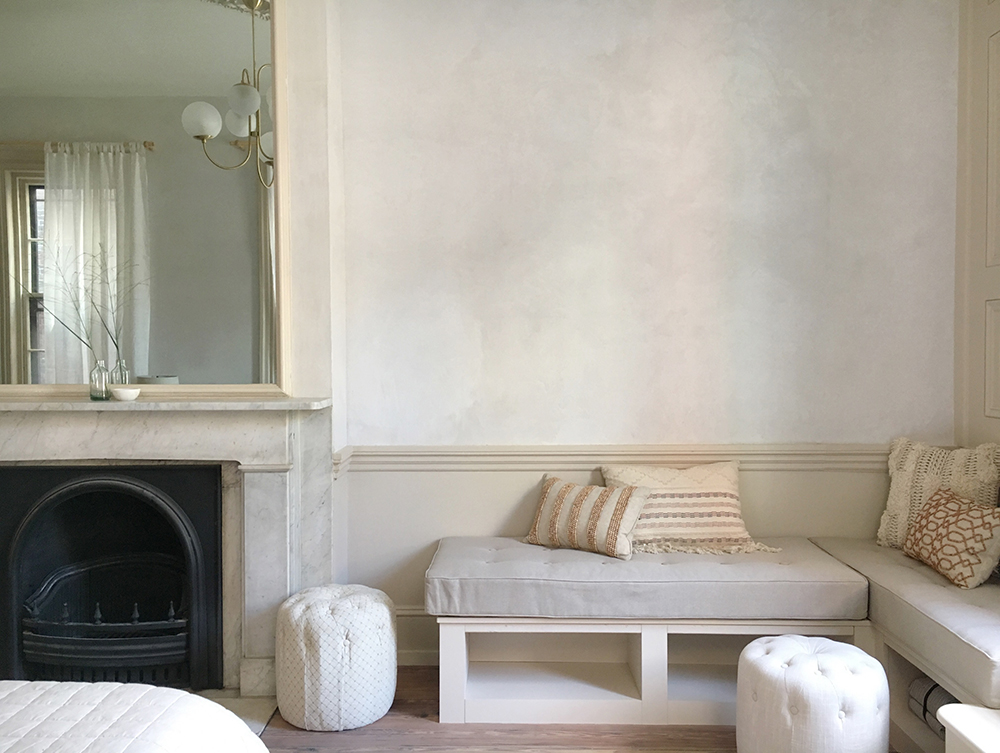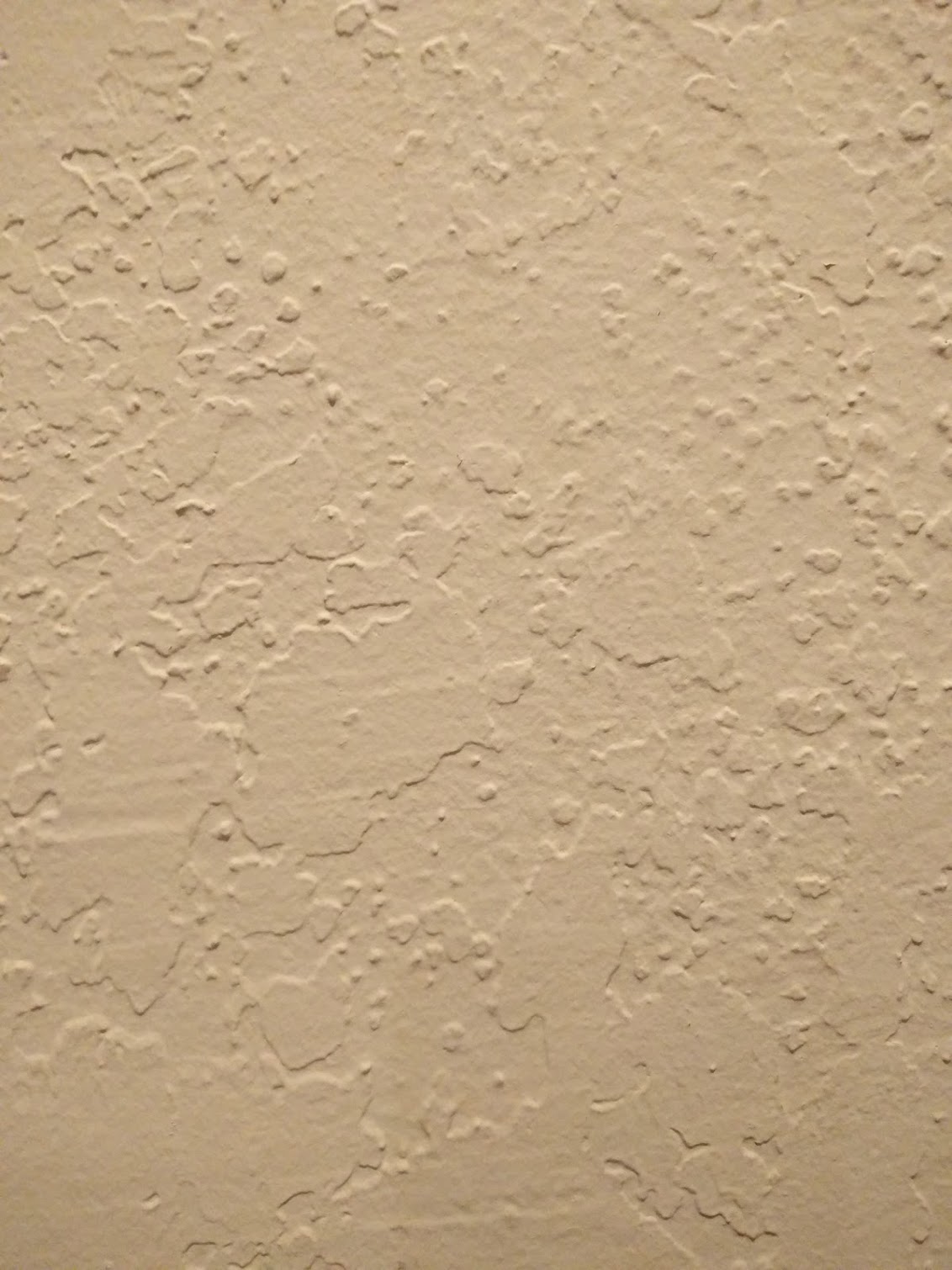Wall texture
Everyone knows about the importance of wall placement and color. No one ever talks about wall texture. In fact, I never thought about wall texture until I encountered bad wall texture.
Upscale modern houses feature extremely smooth walls with a "level 5" drywall finish. "Level 5" means that the drywall has been taped, coated twice, sanded, skim coated, and sanded again. There won't be any visible cracks, bumps, or tool marks. This is the type of wall finish that you see in quality new construction and architecture magazines.
If you live in a suburban ranch house or low-slung apartment building from the 1950s to 1980s, you probably have textured walls and ceilings. Cheap, mass construction in the suburbs relied on texture to hide the imperfections of uneven walls. This is where you'll find popcorn, knockdown, and orange peel textures on walls or ceilings. (Popcorn texture is the worst because, prior to 1978, it used asbestos.) These finishes are considered dated.
Pre-war homes like ours have plaster walls over lath instead of drywall. When in poor condition, plaster walls are a curse. They crack, crumble, and shed dust. They feature the scars of foundation settling (long cracks along walls and around windows) and changes in home layout. When in good condition, plaster walls add a beautiful uneven patina to an old house.
Our house's walls were a mixed blessing. The good news was that the plaster was healthy: it had relatively few cracks and wasn't crumbling. The bad news was that someone in the 1980s had applied a layer of texture meant to mimic the appearance of drywall knockdown. This was either done for style or to mask the marks of a small home expansion that took place at that time. Either way, the end result looked a lot more like a cheap apartment building from 1982 than the subtle hues of a Jersey Ice Cream Co project. We decided to skim coat our walls, which essentially adds a thin new layer of plaster over the old.
We're very happy with the end result! In person, the upgraded walls look clean and neutral. (It's hard to photograph the end result, since surfaces without contrast just look like white squares in photos.)
If you're considering doing something similar, here are some things we learned in the process:
- Expect the imperfect. You aren't going to end up with perfectly smooth, Level 5-style walls. All of the contractors that I spoke to recommended against too-smooth plaster walls due to the inherent imperfections in old walls.
- "Old World" finish. Our contractor recommended an "Old World" finish. I couldn't find any references to this term online, but people I spoke to locally were familiar with it. It means a smooth finish with artfully placed splotches (see the middle row of photos above) to intentionally add small imperfections. The person laying the drywall can control the size, placement, and frequency of the splotches based on your taste.
- Expect a huge mess. Plaster and dust got everywhere: in our cabinets, all over the floors (despite putting down paper), on the door handles, in the fridge. The sanding phase was especially messy. You can't live in the home through this process, and covering furniture is not sufficient. I'm also glad we did it before refinishing the floors.
- Take care of your HVAC. If possible, keep your HVAC off to avoid filling it with dust. We hit an unexpected cold spell and had to turn the heat on to help the plaster dry. We only turned the heater on at night, while they weren't actively working. Our HVAC contractor installed special filters and cleaned our ducts once they were done sanding.
- Cost. We paid about $4k to skim coat 1000 sqft. This is a lot of money for a relatively small cosmetic change, but we thought it was worth it.
In forty years, I'm sure someone will turn their nose up at our smooth walls. "It was fashionable in the early 2000s to build houses with smooth walls," they'll say. "There's no accounting for taste!" And then they will spray texture all over my beautiful smooth plaster.




















